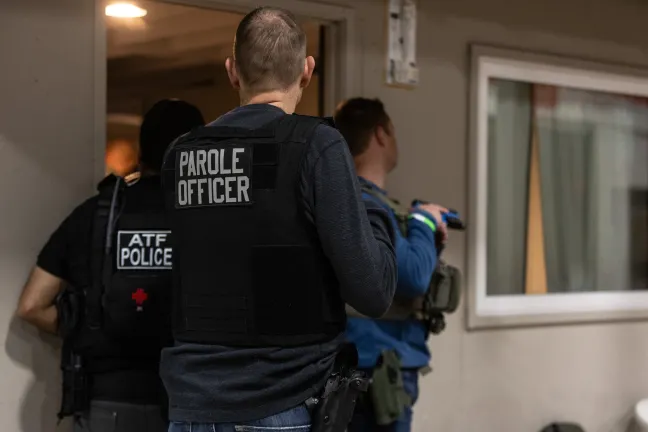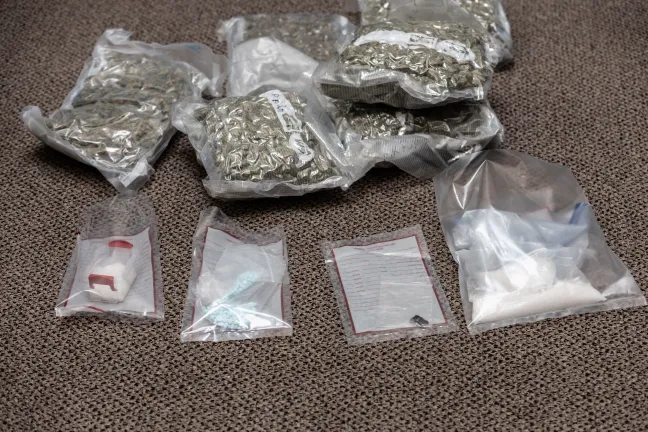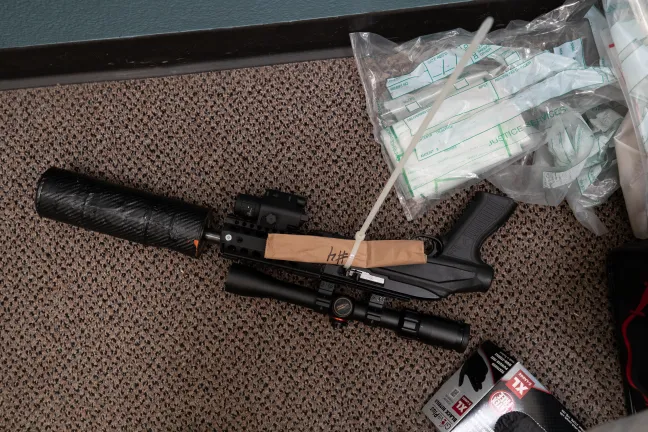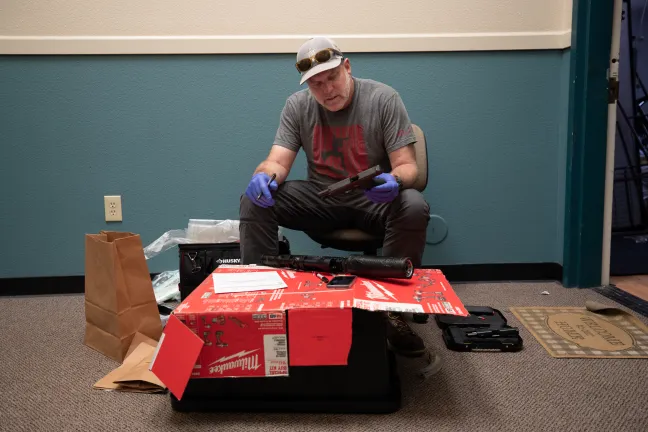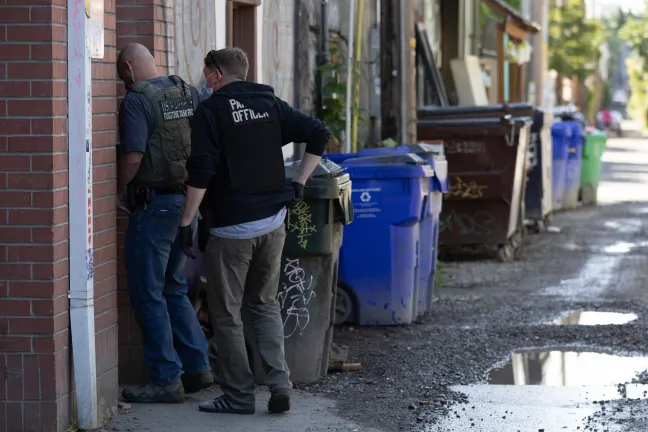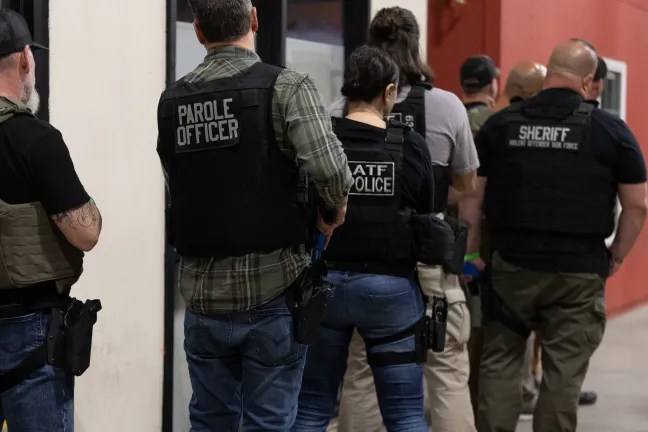Multnomah County’s Department of Community Justice this month joined the U.S. Marshals Service, the Multnomah County Sheriff’s Office, Gresham Police, the Multnomah County District Attorney’s Office, and more than 30 law enforcement members for Operation Safer Multnomah.
The five-day operation, which began Tuesday, June 7, resulted in the seizure of 21 firearms, three pounds of methamphetamine, 19 grams of heroin and 449 fentanyl pills. Watch more here.
Led by the U.S. Marshals Service Pacific Northwest Violent Offender Task Force, the operation was a major undertaking to address high-level outstanding warrants (including federal warrants) for serious, violent crimes — mostly associated with gun-related crimes and illegal gun possession.
“These are guns possessed by felons and people who are dealing commercial quantities of drugs,” said Multnomah County Sheriff’s Sgt. Matt Ferguson, who leads the Sheriff’s Office’s Special Investigations Unit.
“We’re seeing a huge influx of drugs in our community right now.”
The operation is part of ongoing work to address the proliferation of illegal guns and drugs in the Portland metro area, an issue that affects communities across the country. The event fell during June, when communities across the country recognize National Gun Violence Awareness Day (June 3) and when some communities recognize the immeasurable toll gun violence takes for the entire month.
The work relies on immense collaboration and coordination — not just among law enforcement partners, but also among the many organizations and people affected by the devastation and crisis of gun violence.
It’s part of downstream efforts to address violence, after someone has intersected with the criminal justice system. For parole and probation, that work comes at the end of the system, after someone has been booked and faced charges and after case(s) have been processed.
The overall work to fully address community violence also must include comprehensive upstream investments in health, behavioral health, employment and improving neighborhoods, opportunities and the economic standing and overall well-being of community members.
“We take our role in the County safety net very seriously and our role is ‘Community Safety through Positive Change,’” said Erika Preuitt, director of the Department of Community Justice.
For nearly three decades, Preuitt has served the Department of Community Justice, launching her career as a parole and probation officer, and once serving on the very team involved in Operation Safer Multnomah.
Today, she leads the organization she serves: a department that often focuses on high-risk individuals but also invests in programs and services that improve community safety by helping justice-involved youth and adults change their behavior. That includes investments in community-based organizations and culturally responsive services.
“We see the impact of our work in real time,” said Preuitt.
“I sit at the same table with people who have been on my caseload. That’s powerful because when we focus our investments on the highest risk, and the services and support for the highest behavior, they give back to the community.”
Many people who were once considered high-risk individuals are making positive changes and turning their lives around.
“With parole and probation, we ultimately want to help people get resources, to help with jobs and help people be successful and ultimately reduce recidivism so there aren’t new crimes being committed,” said David Main, a parole and probation officer with Multnomah County’s Department of Community Justice.
“But when there are people involved in risky behavior, warrants and have new law violations, there’s an accountability side.”
The residual impacts of a once-in-a-century pandemic are still being felt today, even more than two years since COVID-19 first gripped the nation.
But the County, alongside the community, is pressing forward. Thursday, June 16, the Multnomah County Board of Commissioners unanimously adopted a $3.3 billion budget that continues investments designed to address the root causes of violence, including poverty, while also funding services supporting schools and neighborhoods and youth employment opportunities.
“We believe people can change their behavior and we invest in resources to do so,” said Preuitt.
“We also know we have to intervene when high-risk behavior is happening in our community, and we’re proud of our strong partnership to collaborate to ensure that our community is safe — especially with those on our caseloads.”
